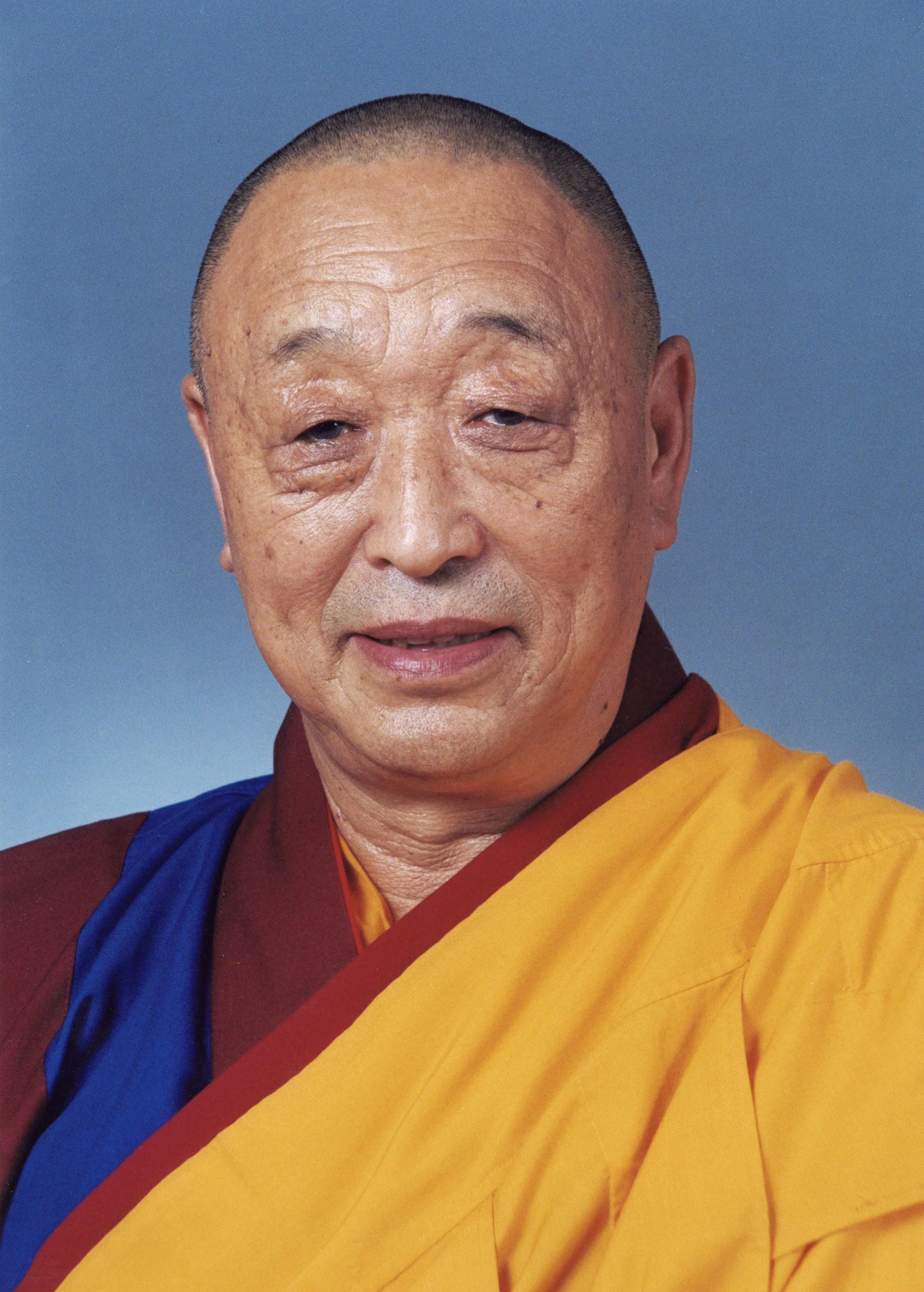
Spiritual Teachers | “Lamas”
Lama (Tibetan: བླ་མ་, Wylie: bla-ma) is a title for a teacher of the Dharma in Tibetan Buddhism. The name is similar to the Sanskrit term guru, meaning "heavy one", endowed with qualities the student will eventually embody. The Tibetan word "lama" means "highest principle", and less literally "highest mother" or "highest father" to show close relationship between teacher and student.
Spiritual teachers provide a special opportunity to connect with Lineage, define and understand spiritual development and serve as spiritual exemplars of the primordial positive qualities of mind, body and speech. The Australia Bön Mustang Foundation is fortunate to be advised by and work closely with Geshe Sonam Gurung (pictured below), who was born in the Mustang Valley of Nepal.
Tonpa Shenrab (Founder of Bön) - Tritsug Gyalwa
-

His Holiness the 33rd Abbot of Menri Lungtok Tenpei Nyima Rinpoche (1929-2017)
At the age of 25, His Holiness achieved a Geshe degree at Kyangtsang Monastery under the guidance of the chief teacher Horwa Drungrampa Tendzin Lodro. He first visited the West thanks to the Rockefeller Foundation and David Snellgrove, who brought him, Lopon Tenzin Namdak and Samten Gyaltsen Karmay to London in 1961. In 1968, at the new Tibetan Bonpo settlement in Dolanji, after a seven days long, special ritual of selection process by the highest bonpo teachers and lamas, he was appointed on the golden throne of Nyamed Sherab Gyaltsen as the 33rd Abbot of Menri Monastery. He was enthroned on the 4th of March 1969 as supreme head of all the Bonpo followers and the chief of all the Bonpo Lamas both in exile and in Tibet, and received the name Lungtok Tenpai Nyima as his enthronement name. Lungtok Tenpai Nyima was the first Tibetan monk to have an in-person meeting with Pope Paul VI and had a great relationship with Tenzin Gyatso, the 14th Dalai Lama.
-

Rahob Tulku, Thupten Kalsang Rinpoche
Rahob Rinpoche obtained a Geshe degree from Drepung Monastery in Lhasa, and a degree in Indian Buddhism and Sanskrit from Varanasi University in India.
Rinpoche spent over 80 years mastering and integrating meditation practices from different schools of Buddhist meditations. These schools include The Great Completion (Dzogchen) and Gelugpa concentration and emptiness meditation from Tibet and India, Theravadin mindfulness meditation from Thailand, and Shingon and Zen Buddhism from Japan.
Rinpoche was considered an emanation of Padmasambhava, and was the incarnate Tulku of Rahob Monastery in old Tibet. Rinpoche has a long and close relationship with Tenzin Gyatso, the 14th Dalai Lama. In 1965 at His Holiness the Dalai Lama’s request, Rinpoche translated Opening the Wisdom Eye, the first of the Dalai Lama’s books to be published in English.
-

Geshe Sonam Gurung
Geshe Sonam Gurung received his Geshe degree under the guidance of H.H 33rd Menri Trizin, the Abbot of Bön Menri Monastery and lineage holder of the Yungdrung Bön spiritual tradition.
Geshe Sonam served as personal assistant to His Holiness and following the direction and guidance of His Holiness, Geshe Sonam and the late Dr. Daniel P Brown translated many of the key texts in the Bön Dzogchen canon. In particular, they translated significant works from Shardza Tashi Gyaltsen Rinpoche. Shardza Rinpoche’s key texts (Heart Drops of Kuntuzangpo, Kusum Rangshar, and the Treasury of the Expanse) are detailed yogic roadmaps of the Bön Dzogchen pathway to enlightenment, combining both utterly clear philosophic foundation as well as detailed practice explanation.
Geshe Sonam’s goal is to make these teachings available on a global basis in forms appropriate for the 21st Century.
-

Dr. Daniel P. Brown (1948 - 2020)
Daniel Brown is the author of 24 books including Transformations of Consciousness (with Ken Wilber & Jack Engler), and a book on Mahamudra, Pointing Out the Great Way: The Mahamudra Tradition of Tibetan Meditation-Stages (Wisdom Publications). He is also the co-author of a book (with Geshe Sonam Gurung) on the Bon A Khrid lineage of Bon Great Completion Meditation.
In graduate school at The University of Chicago he studied Sanskrit with Hans van Beutenen, and also studied Tibetan, Buddhist Sanskrit, and Pali languages in the Buddhist Studies Program at the University of Wisconsin, Madison WI. He spent 10 years translating meditation texts for his doctoral dissertation on Tibetan Buddhist Mahamudra meditation.
He studied meditation practice for about 50 years, beginning with reading Patanjali's Yoga Sutras and its main commentaries in the original Sanskrit with professor Mircea Eliade, as well as practicing Patanjali's stages of meditation directly with Dr. Arwind Vasavada. At the same time, Dr. Brown studied the Burmese Theravadin Buddhist mindfulness meditation, both in the United States and directly with the originator of the Burmese mindfulness tradition, Mahasi Sayadaw in Rangoon, Burma and other masters including Tungpulo Sayadaw and Achaan Cha.
Dr. Brown first learned Indo-Tibetan concentration and insight meditation with Geshe Wangyal, and then years later co-taught concentration and insight meditation with Denmo Locho Rinpoche and Yeshe Tapkay at Geshe Wangyal's retreat house over a 15-year period. Dr. Brown learned Mahamudra from numerous Tibetan lamas mainly in the Tilopa/Marpa tradition and its subsidiary traditions, such as the Dwags-po/Karma or 'Seat' lineage, the 'Bri gung' or 'Five Parts' lineage, and the Drug pa or 'One Taste' lineage, and also from the ecumenical Rime movement wherein Mahamudra and Gelukpa emptiness practices were integrated and Mahamudra and Great Completion (Dzogchen) practices were integrated.
